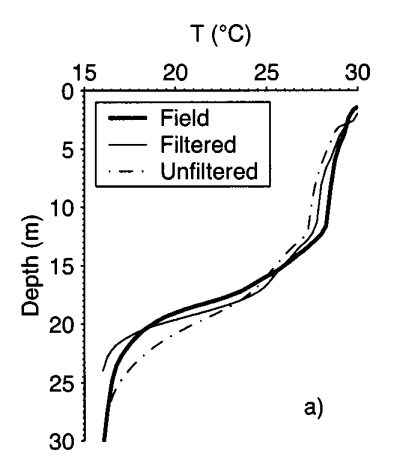Reducing numerical diffusion effects with pycnocline filter
ABSTRACT: Numerical or artificial diffusion is the unintentional smoothing of gradients associated with the discretization of the transport equations. In lakes and reservoirs where through-flow is small, the effects of numerical diffusion of mass are cumulative, leading to a progressive weakening of vertical density stratification. This density field misrepresentation precludes accurate, long-term, three-dimensional (3D), hydrodynamic simulations on fixed grids in closed basins with an active thermocline. An ad hoc technique to limit the destratifying effects of numerical diffusion of mass is presented and tested for a 3D, hydrostatic, Z-coordinate numerical model. The technique quantifies the domain-integrated numerical diffusion by assessing the change in the background potential energy Eb. At each time step, the change in Eb associated with numerical diffusion is calculated, then removed using a sharpening filter applied to each water column. In idealized test cases, the filtering technique is effective in maintaining density stratification over one year while undergoing periodic, large-amplitude forcing by internal waves. Forty-day simulations of Lake Kinneret compared to field measurements demonstrate improved representation of density stratification using the filtering technique.
EXTRACT: From Figure 9:

Fig. 9. Comparison of averaged profiles at Station T3 between field and simulated with and without correction technique. Average profiles are obtained by calculating isotherm depths and averaging over days 205–218. The simulation begins on day 180.
